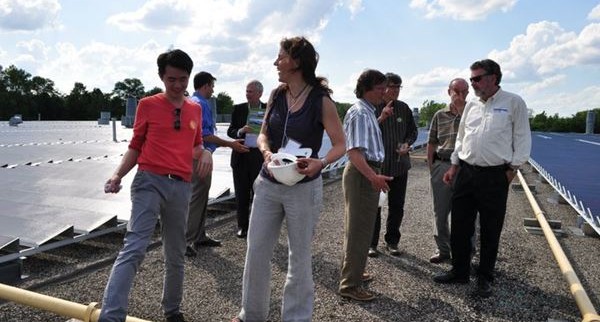The following is a guest post from CanSIA and the Solar Canada Conference, which explores the increase in local, small scale renewable energy co-operatives in Ontario over the past few years, thanks to the start of the Feed-in-Tariff program back in 2009. Renewable energy co-operatives date back to the 1990s, with TREC Renewable Energy Co-operative being one of the first ones to pop up in Ontario. Local ownership of energy projects not only contribute to a community’s economic and social wellbeing, they also lead to greater acceptance of renewables as a feasible solution to global energy demands.
Renewable Energy Co-operatives Flourish in Ontario
The landscape of solar energy in Ontario continues to shift toward smaller and intermediate-scale projects. The rise in the number of projects is mostly due to two phenomena: the start of the Feed-In Tariff (FIT) program and the rise of renewable energy cooperatives.
The FIT program began in 2009 as part of the Green Energy Act. FIT allows private developers to create renewable energy facilities and sell the power produced at a fixed (and partially subsidized) price over a specific contract term. Homeowners can also participate through the microFIT program covering facilities of less than 10 kW.
Facilities greater than 500 kW are no longer eligible for the FIT program, and are facing increasing bureaucratic hurdles—thus the door is open for intermediate-scale solar facilities to play an increasing role in Ontario’s renewable energy picture…Read more on Solar Canada Conference’s website.

CanSIA is a national trade association that represents the solar energy industry throughout Canada. Since 1992, CanSIA has worked to develop a strong, efficient, ethical and professional Canadian solar energy industry with capacity to provide innovative solar energy solutions and to play a major role in the global transition to a sustainable, clean-energy future.

Solar Canada Conference 2015 provided a platform to connect with industry professionals and enter the growing solar power market. It also created a chance for those in the industry to network with thousands of attendees and hundreds of exhibitors representing the entire industry, including: solar integration, development, engineering and EPC, equipment manufacturers, utilities, consultants, federal, provincial and municipal governments, communities, and students.
Header Image source: FCPC website media gallery
Solar Canada Conference banner: CanSIA Events page

